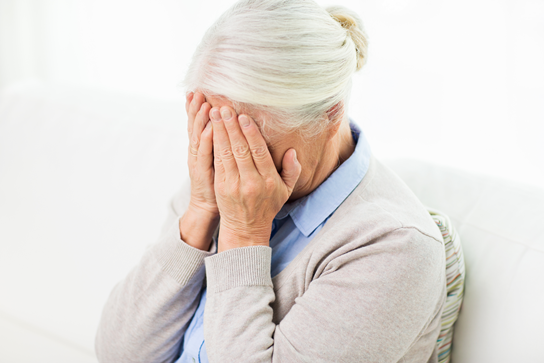Mental Health
Good mental health is essential to overall well-being. More than 1 in 5 women in the United States experienced a mental health condition in the past year, such as depression or anxiety. Many mental health conditions, such as depression and bipolar disorder, affect more women than men or affect women in different ways from men. Most serious mental health conditions cannot be cured. But they can be treated, so you can get better and live well.

ADHD
Attention-deficit/hyperactivity disorder (ADHD) is a brain disorder marked by an ongoing pattern of inattention and/or hyperactivity-impulsivity that interferes with functioning or development.

Alzheimer's disease + Dementia
Many of us look forward to our retirement and see our later years as a chance to reflect and enjoy the lives we built for ourselves. But for hundreds of thousands of Canadians, this time of reflection becomes a time of loss and confusion. Memories disappear—eventually, people living with Alzheimer’s disease may not be able to remember their own names. Some memory loss is a normal part of aging, but when memory loss and confusion impact your day-to-day life, it might be a sign of Alzheimer’s disease.

Anxiety disorders
Anxiety is a normal response to stress. But when it becomes hard to control and affects your day-to-day life, it can be disabling. Anxiety disorders affect nearly 1 in 5 adults in the United States. Women are more than twice as likely as men to get an anxiety disorder in their lifetime. Anxiety disorders are often treated with counseling, medicine, or a combination of both. Some women also find that yoga or meditation helps with anxiety disorders.

Bipolar disorder
Bipolar disorder, also known as manic-depressive illness, is a brain disorder that causes unusual shifts in mood, energy, activity levels, and the ability to carry out day-to-day tasks.
There are four basic types of bipolar disorder; all of them involve clear changes in mood, energy, and activity levels. These moods range from periods of extremely “up,” elated, and energized behavior (known as manic episodes) to very sad, “down,” or hopeless periods (known as depressive episodes). Less severe manic periods are known as hypomanic episodes.

Co-existing mental health conditions
Ups and downs are a normal part of life. We all feel a bit stressed out or struggle to cope with a problem from time to time. We all get angry once in a while or find it hard to express our needs assertively. Most of us could use a little help finding balance, getting enough sleep, and getting active.

Depression
Life is full of ups and downs, but when you feel sad, empty, or hopeless most of the time for at least 2 weeks or those feelings keep you from your regular activities, you may have depression. Depression is a serious mental health condition. In the past year, women were almost twice as likely as men to have symptoms of depression. Depression is not a normal part of being a woman. Most women, even those with the most severe depression, can get better with treatment.

Eating disorders
Eating disorders, such as anorexia, bulimia, and binge eating disorder, are serious mental health conditions that can happen to anyone but are much more common in women. People with eating disorders eat too little or too much. Extreme eating or dieting is not a normal or healthy part of being a woman. Some eating disorders also involve people making themselves throw up or taking laxatives to get rid of the food, or extreme exercise to burn off the calories. All eating disorders are dangerous if left untreated.

Grief
The medical community views complicated grief as a major depressive episode.The bereaved person may think the sadness is ‘normal,’ but seeks professional help for relief of associated symptoms such as insomnia. A diagnosis of major depressive disorder is generally not given unless symptoms are still present after two months.

Body dysmorphic disorder
Body image is how you think and feel about your body. Women with a positive body image are more likely to have good mental health. But many women in the United States have negative body images, which can put them at higher risk of depression, eating disorders, or other mental and physical health problems. You can take steps to develop a healthier body image and get treatment for mental health conditions.

Personality disorders
Borderline personality disorder is a mental illness marked by an ongoing pattern of varying moods, self-image, and behavior. These symptoms often result in impulsive actions and problems in relationships. People with borderline personality disorder may experience intense episodes of anger, depression, and anxiety that can last from a few hours to days.

Psychosis
Psychosis is often described as a “loss of reality” or a “break from reality” because it makes you experience or believe things that aren’t real. It can change the way you think, act, feel or sense things. Psychosis can be very scary and confusing, and it can significantly disrupt your life. In fact, the World Health Organization (WHO) ranks psychosis as the third-most disabling medical condition in the world.

Schizophrenia
Schizophrenia is a chronic and severe mental disorder that affects how a person thinks, feels, and behaves. People with schizophrenia may seem like they have lost touch with reality. Although schizophrenia is not as common as other mental disorders, the symptoms can be very disabling.

Stress
Stress is a reaction to a change or a challenge. In the short term, stress can be helpful. It makes you more alert and gives you energy to get things done. But long-term stress can lead to serious health problems. Women are more likely than men to report symptoms of stress, including headaches and upset stomach. Women are also more likely to have mental health conditions that are made worse by stress, such as depression or anxiety.1



